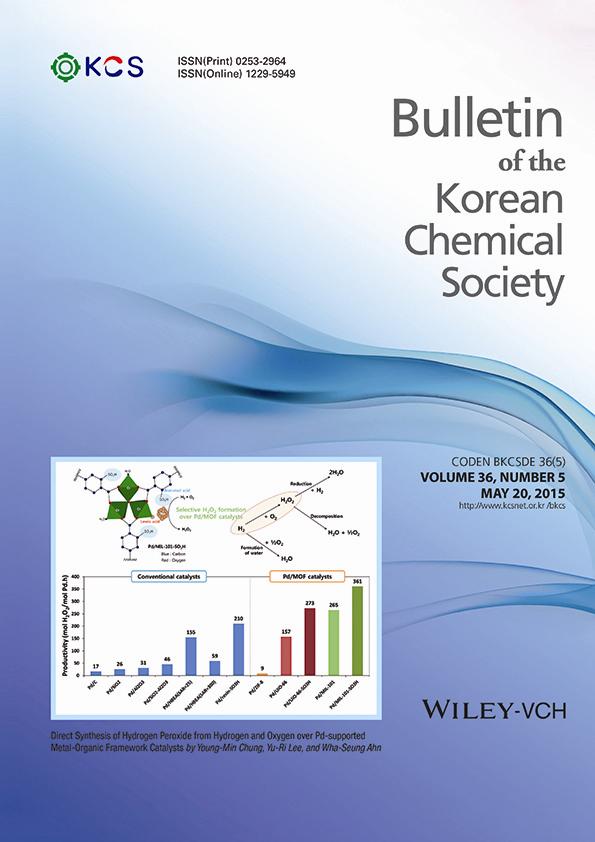Synthesis and Characterization of Soluble Silyl End-capped Arene-Thiophene Co-Oligomers
Abstract
Soluble dimethyl-n-octylsilyl end-capped arene-thiophene oligomers with the central unit including phenyl, biphenyl, fluorine, and naphthalene were synthesized by Stille reaction. The optical, electrochemical, and thermal properties of the oligomers were then measured. The absorption maxima of the arene-thiophene oligomers in dilute solutions were close to that obtained for DSi-4T (λabs = 403 nm). They exhibited well-resolved fluorescence spectra in solution with emission maxima at 445, 446, 448, and 450 nm for DSi-TTPTT , DSi-TTPPTT , DSi-TTFTT , and DSi-TTNTT , respectively. The highest occupied molecular orbital (HOMO) energy levels were determined to be −5.29, −5.33, −5.27 and −5.29 eV, respectively; therefore all co-oligomers displayed a lower HOMO energy level than the −5.14 eV of DSi-6T . The thermal stability of the arene-thiophene oligomers was investigated by differential scanning calorimetry (DSC) and thermal gravimetric analysis (TGA). Except for DSi-TTPTT , the TGA results showed a 5% weight loss at around 400 °C, which indicates high thermal stability. Dimethyl-n-octylsilyl end substituents allowed solution processability due to their high solubility. Overall, the electrochemical analysis of arene-thiophene oligomers indicated superior oxidative stability to DSi-6T .




